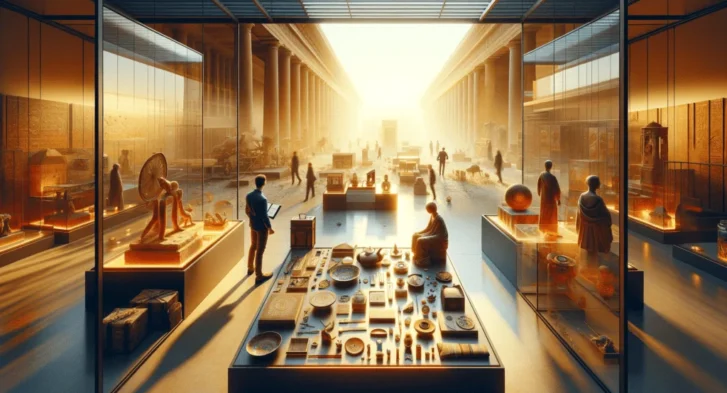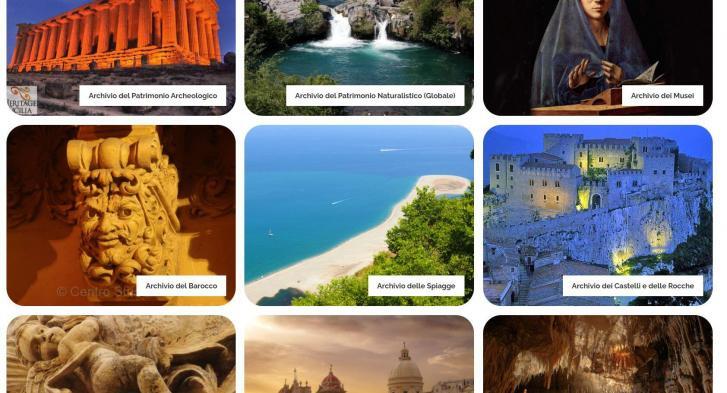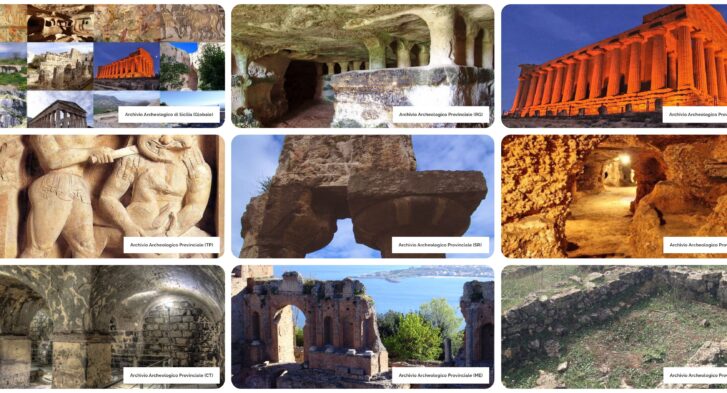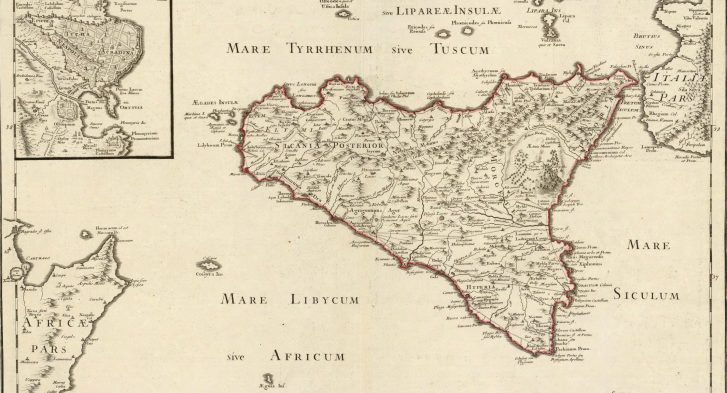Zeus (Jupiter)
by Ignazio Caloggero
Reference page: Repertory of Cults and Myths
Origins of the Myth
Identified with the Roman Jupiter, he was considered the god of light, the bright sky and lightning, the supreme and omnipotent god of the Greeks. His omnipotence did not take him away, in any case, from the will of the Moira, the goddesses of destiny, even if destiny itself is, in some way, seen as an emanation of his wishes. In fact, mythology attributes to him among the many loves also the one with Themes, one of the Titanides, from which he had the Moira who are responsible for the Destiny of which Zeus was the guarantor.
Zeus's task was to maintain harmony in the world; he was considered the protector of civil life and hospitality, he gave punishments for transgressors even if they were the Olympians themselves, who still had to submit to his provisions. Zeus, in fact, thundered Asclepius when he discovered that he made the dead resurrect with the risk of endangering the order of the world.
While knowing fate, Zeus did not exercise prophecy, a task entrusted to others, including Apollo.
But the "guarantor of the destiny of the world", careful that the whims of gods and men did not cause upheavals in the cosmic harmony, was not immune from defects. His amorous whims, for example, made his love life very troubled. The multiplicity of love affairs attributed to Zeus could be connected to the evolution of the religion of the pre-Greek populations. Initially, there were several nucleuses of populations, each of which had its own supreme divinity which could be male (in this case accompanied by a female divinity), in the case of a matriarchal organization, it could also be female (in this case it was the supreme goddess to be flanked by a male deity). It is probable that all the supreme male divinities were incorporated into a single divinity, thus aggregating the pre-existing ones into a single cult and also inheriting the relationship of union with the female divinities alongside the ancient gods.
Another reason for the proliferation of love affairs and the innumerable children of Zeus could be linked to the desire of many families to build a family tree in which none other than the supreme god figured among the relatives. This was particularly useful when there were doubts about legitimacy. Yet another reason may be linked to the mythological language which presents, in the key of loving union, phenomena drawn from nature, thus, for example, the union between Zeus and Demeter could symbolize the sky (Zeus) which, thanks to its rains , makes the earth fertile (Demeter).
The tables below show only some of the loves of Zeus and the children he had.
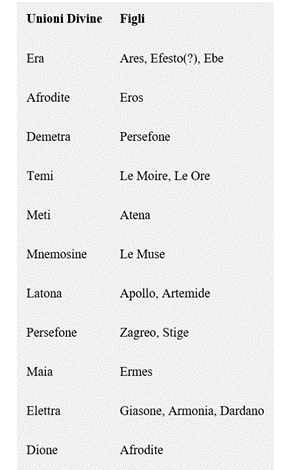
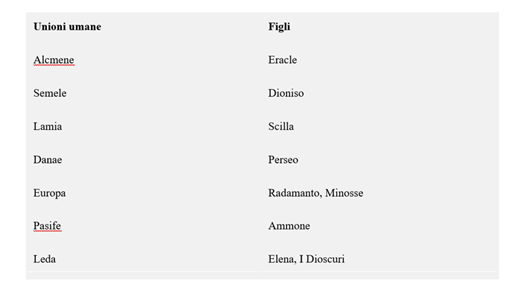
Son of the Titan Cronos and Rhea, Zeus waged a war against his father and the Titans for supreme power. In the fight he was helped by the brothers he had brought back to life and by the Cyclops whom he freed from the underground, where Cronos had imprisoned them. After 10 years of hard struggle the Olympic gods succeeded in chasing Cronos and the Titans from Heaven. In the division of power, Zeus obtained Heaven and domination over the entire Universe, Poseidon the Sea, and Hades (Pluto) obtained the underworld.
Zeus is represented in various attitudes, almost always accompanied by the thunderbolt, which he holds in his hand, to symbolize his power over lightning, which he used to punish mortal beings and gods when chance required it.
The cult of Zeus varied according to the places, cultural influences and pre-existing cults, and consequently also the attributes assigned to him varied, therefore he became Zeus Olympus, Zeus Eleuterio, Zeus Atabirio, Zeus Polieo and so on.
In Athens, in honor of Zeus Polieo (protector of the city), the rite of Bufonie was celebrated: a priest called "Bufono" ("bovicide") killed, with ax blows, a bull that had been made to eat barley grains mixed with grain, scattered on the altar of Zeus Polieo. The priest, after having killed the bull, threw away the ax and fled as if frightened by what he had done, while the ax used was tried and condemned to be thrown into the sea [Pausanias, Lib. I,24,4]. The very ancient rite was linked to the primitive agricultural cults and probably, in its most ancient form, envisaged the slayer of the bull as a sacrificial victim.
The Myth in Sicily
SIRACUSA
The main Greek deity could not be missing in Sicily: in Syracuse there was more than one temple and a grandiose statue in honor of Zeus Eleuterio which was raised by the population after the removal of Thrasybulus, as Diodorus recounts [lib XI 72]. On that occasion, feasts were established in honor of Zeus in which 450 bulls were sacrificed for the banquet of the original citizens [In the sense that mercenaries who had had citizenship under the tyranny of Gelon were excluded from these banquets].
Camarina and Agrigento
Information on the cult of Zeus is also found in Camarina and Agrigento where there was a temple considered one of the largest on the island and described in minute detail by Diodorus Siculus. It is still considered the largest Doric temple in the West. Its construction began in 480 BC, after the battle of Imera, but was not completed, as Diodorus himself recounts (lib XIII.82). The temple measured m. 112,70 x 56,30 with a height that must have exceeded 15 meters and a total area of 6340 mXNUMX.
Also in Agrigento there was the temple of Zeus Polieo, on whose ruins it is said that a Christian cathedral was built.
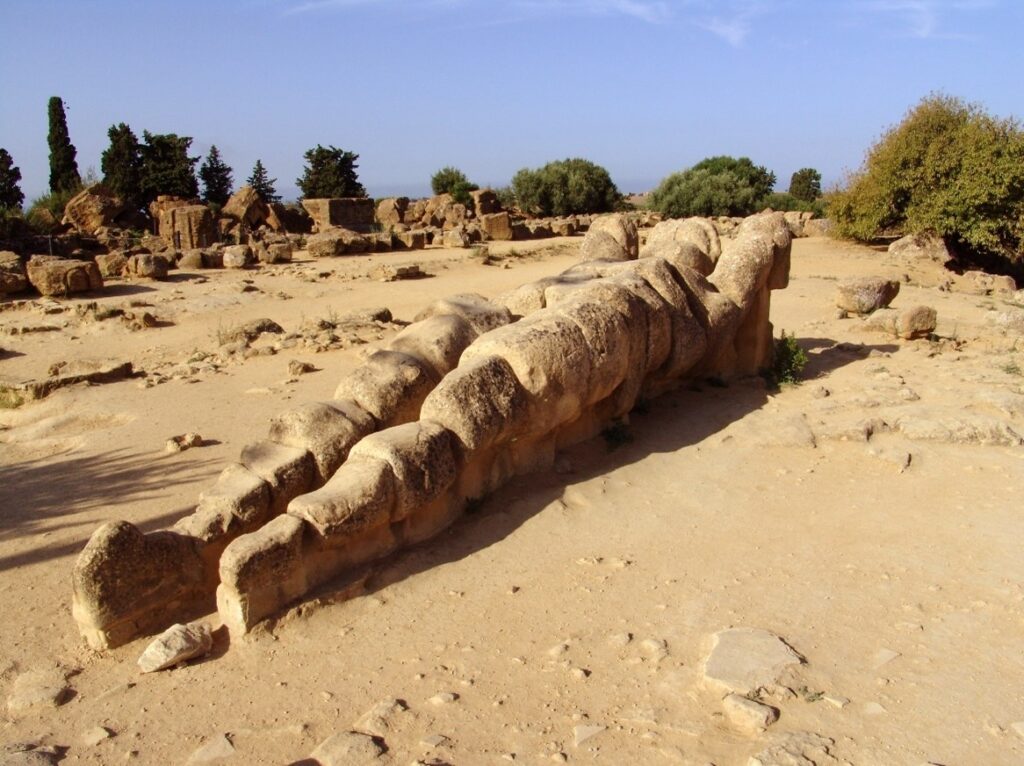
Agrigento: Remains of the temple of Zeus – Copy of a Telamon used to support the temple (original in the National Museum of Agrigento) (Photo: Ignazio Caloggero)
Selinunte
In Selinunte there was a temple dedicated to Zeus Agraios [Ciaceri Emanuele: Culti e Miti dell'Antica Sicilia. p. 144], while a sanctuary dedicated to Zeus Melichios (Zeus sweet as honey) was found in the locality called "hill of Gaggera". The name of Zeus appears in the "large Selinunte table", where the gods are thanked after a victory.
Solunto
Archaeological traces of the cult of Zeus have also been found in Solunto where an inscription recalls the cult of Zeus Olympus and in Tindari where a statue was found which is now kept in the archaeological museum of Palermo.
An Etnean Zeus was also venerated on the slopes of Etna and, finally, traces of this cult are also found Alesa, Acre, Imera, Palermo, and Messina.
Extract from the Book ” Cults of Ancient Sicily” by Ignazio Caloggero ISBN: 9788832060102 © 2022 Centro Studi Helios srl


